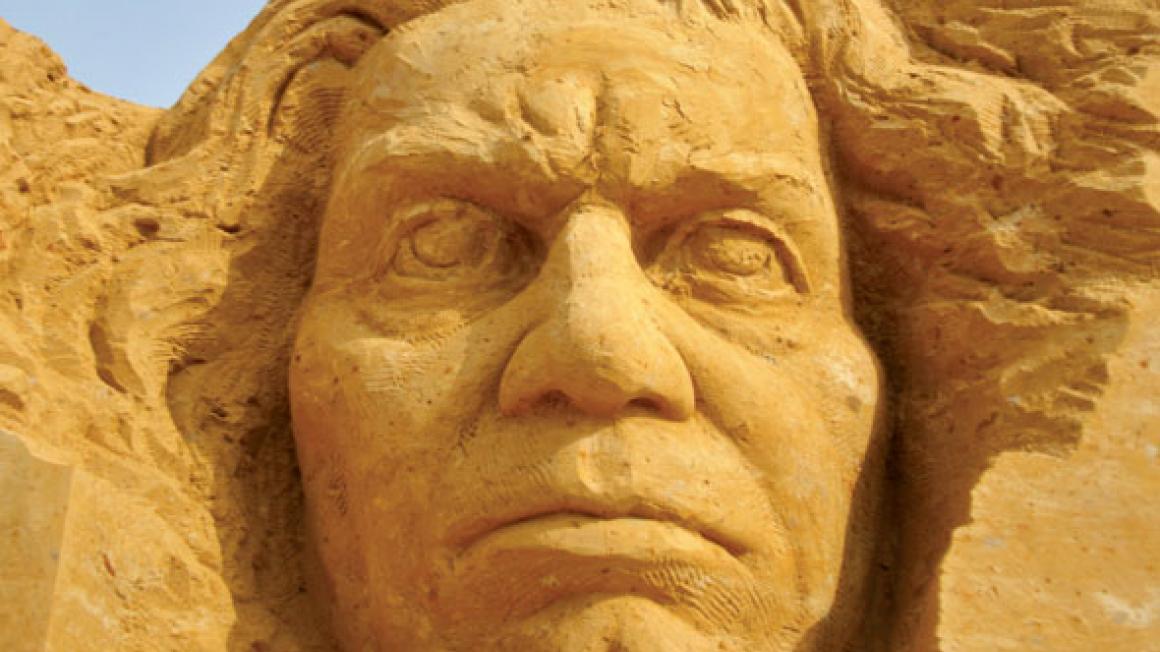Now THAT’S a sandcastle
The theme for this year’s festival is music, a subject close to the city’s heart. So earlier this year, more than 20 world-class artists turned more than 2,000 tonnes of sand into sculp- tures charting the history of music, from Mozart to Simon Cowell. And they are considerably more spectacular than your average sandcastle.
In fact, given that I have the artistic ability of a courgette, I fail to see how I can ever attempt such a masterpiece. Still, my tutor for the day is Mireille Vrinten – who has been sculpting sand for 10 years. Before we get down to making (or should I say, attempting) my sculpture, Mireille talks me through the process, from a lowly pile of sand to a work of art.
First, you have to get the sand ready. This involves putting it into wooden boxes, adding water and then using machines to compact it into a solid block. This can take as long as 10 days, after which artists can take as long again to transform the blocks into finished sculptures.

Mireille explains that it often takes several of these boxes to build the more impressive structures, although I will be using just one box, making something more limited – start small, I say. Because of the relatively small amount of sand that I will be using, we compact it by hand. This essentially involves using a big piece of wood and hitting the sand in the box, to expel any air. It is quite a workout and doubtless a perfect stress reliever, too.
Once compacted, we dismantle the box, leaving a solid block of sand. We then carve out the rough form of the sculpture – in my case, a duck.
After this, it is time to get down to the fine detailing and the nerves take hold. The further I get, the more I worry about taking too much off here or there, prompting a catastrophic collapse.
Surprisingly, I also become quite the perfectionist – sketching out one of my duck’s wings several times before I am happy with the result.
The night before my visit, there was an incredibly heavy rainstorm – and some of the sculptures were left a little worse for wear. Louis Walsh of The X Factor, for example, lost his head. I ask Mireille and the others how they go about repairing a sand sculpture if it is damaged by a deluge.
‘The sand we use has a high clay content so it is relatively easy to add a new bit if something falls off. If the damage is really bad, however, we will sculpt something completely new,’ she says.

The thought of my sculpture being trampled on after spending so long building it is also quite sobering. ‘The sculptures are knocked down at the end of the festival,’ Mireille confesses. ‘It’s part of the process. You know beforehand what is going to happen, and these are here until the end of September, which is great.’
Two hours later, fingers quite numb after a chilly day sculpting – and admittedly with a lot of help from Mireille – my very own sand sculpture is complete. And while it isn’t quite as a good as the more professional sculptures, at least one small child guesses correctly first time what it is meant to be. And for me, that is quite enough.
The Brighton Sand Sculpting Festival runs until late September: www.brightonsandsculpture.co.uk
www.visitbrighton.com




